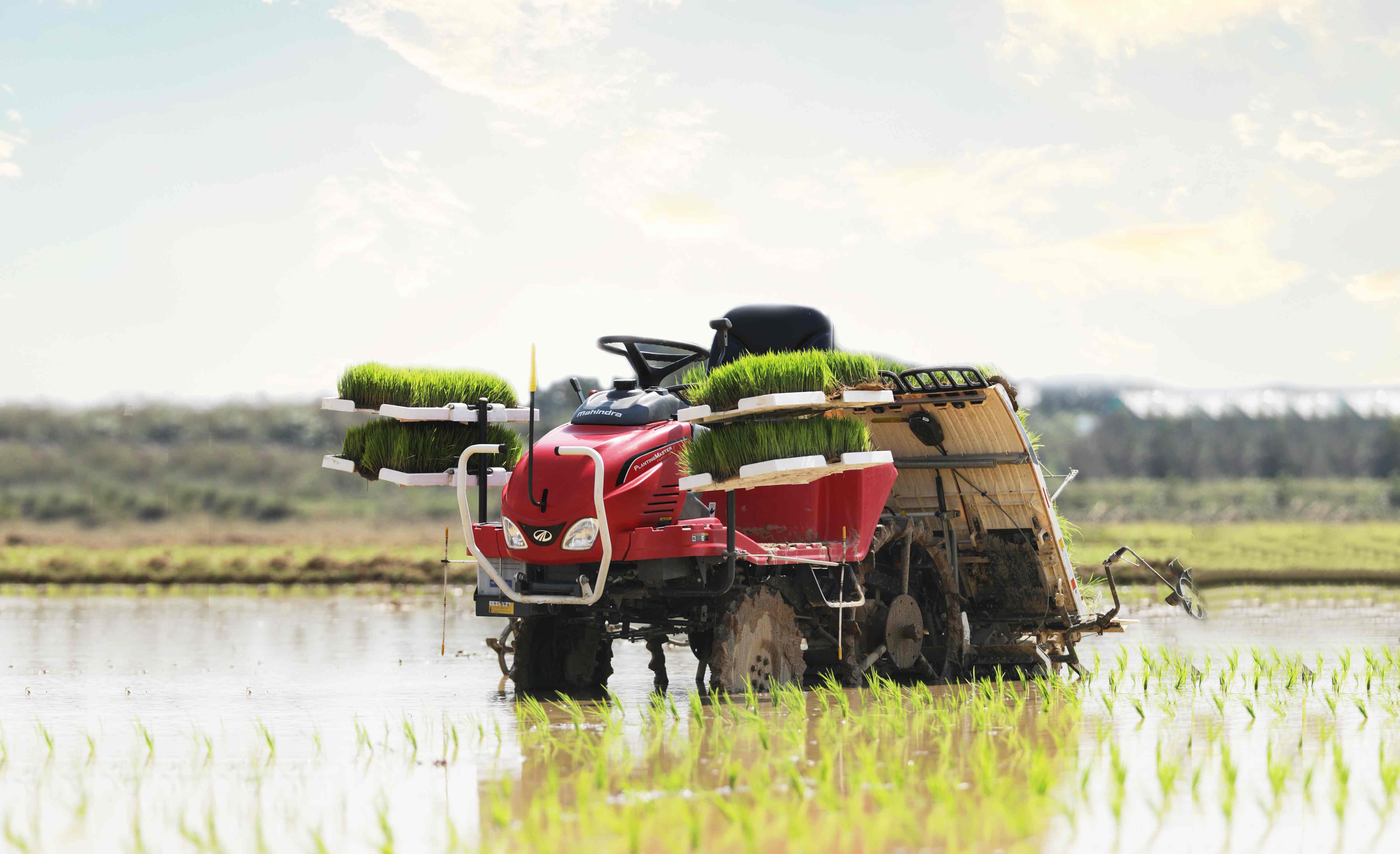Quick Support
Sales
- +91 8888200022 / +91 7744911119
Service
- +91 8888044448
Email
- [email protected]

Rice serves as the staple diet for over half the global population, predominantly in Asia. Its cultivation is historically labour-intensive, requiring hours of manual work that can be tough on farmers. The paddy transplanter has emerged as a technological blessing, transforming traditional rice farming into a more efficient, less laborious process. This article explores the key features of paddy transplanters, their impact on agriculture, and how they could shape the future of rice farming.
Understanding the Paddy Transplanter
The paddy transplanter is an advanced agricultural machine designed specifically for the automatic transplanting of rice seedlings into a field. Before its invention, planting rice was a manual process involving numerous labourers bending for hours, which was not only time-consuming but also physically demanding.
Key Features of Paddy Transplanters
1. Multiple Row Planting Capability
One of the most significant features of paddy planters is their ability to plant multiple rows simultaneously. Depending on the model, these machines can handle from 4 to 8 rows at a time. This capability enables rapid coverage of large fields, significantly speeding up the planting process, which is particularly beneficial during the optimal planting season when timing is critical.
2. Adjustable Planting Density
Paddy transplanters provide options to adjust the spacing between the planted seedlings. This is crucial as it allows farmers to set the density according to the specific type of rice and the soil conditions. Proper spacing is essential for optimal growth as it reduces competition for nutrients, sunlight, and water.
3. Uniform Seedling Distribution
Achieving uniformity in seedling distribution is vital for the consistent growth of rice plants. Paddy transplanters are precision-engineered to ensure that seedlings are planted evenly and at consistent depths across the field. This uniformity helps in achieving a balanced growth environment, leading to better crop development and yield.
4. Reduced Labor and Time
Traditional rice planting is labour-intensive, requiring numerous workers. Paddy transplanters drastically cut down the number of labourers needed by automating the seedling transplanting process. This not only reduces the cost associated with labour but also shortens the planting period, allowing farmers to optimise their working schedules and reduce exposure to unpredictable weather conditions.
5. Lower Plant Mortality Rate
The delicate handling of seedlings by the paddy transplanter minimises damage during planting, leading to lower plant mortality rates compared to manual transplanting. This efficiency is crucial for maximising yield and ensuring that the majority of planted seedlings reach maturity.
6. Cost Efficiency
Although the initial investment in a paddy transplanter can be significant, the long-term benefits justify the cost. These machines offer substantial savings in labour costs and improve yield efficiency, leading to a quicker return on investment. Over time, the reduction in operational costs can significantly boost the profitability of rice farming.
7. Ergonomic Operation
Modern paddy transplanters are designed with the operator’s comfort in mind. Features like adjustable seats, easy-to-use controls, and better overall ergonomics ensure that the machine can be operated with minimal fatigue, making the task less daunting for farmers.
8. Enhanced Manoeuvrability
Operating in wet and muddy conditions is a typical challenge in rice farming. Paddy transplanters are equipped with either wheels or tracks designed to handle such terrain efficiently, preventing the machine from getting stuck and ensuring consistent performance no matter the field condition.
Impact on Rice Farming
The adoption of paddy transplanters has had a profound effect on rice farming:
Efficiency: The ability to plant quickly and accurately allows farmers to manage larger areas with less effort and more precision.
Yield Increase: With improved plant survival rates and optimal spacing, farmers often see a noticeable increase in yield.
Sustainability: Reduced need for labour and decreased waste contribute to a more sustainable and environmentally friendly farming approach.
Looking Forward
As agricultural technology evolves, future paddy transplanters are expected to incorporate even more advanced features such as GPS navigation, automated steering, and real-time field monitoring. These improvements could provide further enhancements in precision farming, allowing farmers to achieve higher efficiencies and better yields.
Conclusion
The paddy transplanter stands as a key technological innovation in agriculture, especially in rice farming, which is vital for the sustenance of a significant portion of the world’s population. By reducing labour, increasing efficiency, and promoting sustainability, paddy transplanters not only support the livelihood of farmers but also play a crucial role in the global food supply chain.
Mahindra Tractors is a notable name in farm machinery. The Mahindra PlantingMaster Paddy 4RO stands as India's inaugural 4-row ride-on rice transplanter, offering a blend of comfort and productivity. Its seamless operation ensures a hassle-free journey, revolutionising the rice farming experience.
As we continue to face challenges such as population growth and climate change, innovations like the paddy transplanter will be vital in ensuring food security and sustainable agricultural practices worldwide. This machinery is more than just a tool; it is a pivotal player in the future of global agriculture.